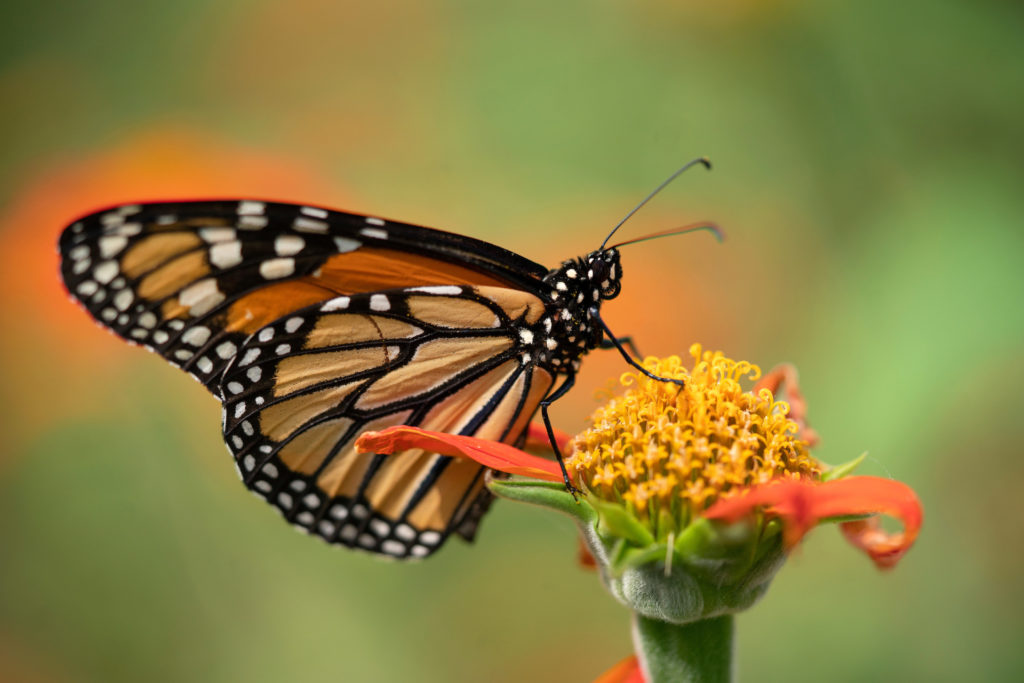- La Feria Community Holds Succesful Business Mixer Event
- Little Nashville to Take Place in Downtown Mercedes
- Lions Basketball Captures District Gold
- La Feria ISD Students Compete in Regional Chess Tournament
- Lions End First Half of 32-4A on a High Note
- La Feria ISD Held Another Successful Parent Conference
- Strong Appearance for Lions at Hidalgo Power Meet
- LFECHS Students Get to Meet Local Actress
- Students Participate in Marine Biology Camp
- Two LFECHS Students Qualify for All-State Band
Monarch Butterflies Facing Battle Royal For Survival
- Updated: August 13, 2022
Pollinators placed on international conservation organization’s Red List as endangered
Written by Paul Schattenberg
Monarch butterflies have long graced the skies of Texas during their annual migration. However, their population has been in steady decline, and recently the International Union for the Conservation of Nature, IUCN, placed the monarch butterfly on its Red List of threatened species, classifying it as endangered.
The IUNC’s Red List is a comprehensive information source on the global conservation status of animal, fungi and plant species. It is a tool for promoting the biodiversity conservation and policy change needed to protect the world’s flora and fauna.
Texas A&M AgriLife entomologists are concerned about the decline in monarch butterfly populations and want Texans and others to understand why these “regal” insects are important to agriculture and the environment.
About the monarch
According to IUCN estimates, the eastern monarch population in the U.S. has declined by anywhere from 22% to 72% over the past decade, with the western U.S. monarch population declining by anywhere from 66% to 91%. Habitat loss, climate change, pesticides and disease were cited as some of the major factors in the species’ decline.
Monarch butterflies migrate from overwintering locations, the largest of which is in Mexico, to more temperate regions that can be thousands of miles from the overwintering areas. Depending on the region, multiple generations of monarch butterflies can be seen before the fall migration to overwintering sites.

The monarch butterfly’s annual spring and summer migration from its overwintering sites to more northern sites overlaps with most of Texas. Many eastern migrating monarchs will pass through Central Texas before spreading northwards to Canada.
In the fall, monarch butterflies begin their trek from northern locations across the U.S. and Canada to their overwintering sites in Mexico. As they move southward, most of these butterflies will converge in north Central Texas and continue their flight south into Mexico.
Factors affecting monarch populations
“Monarchs are very susceptible to environmental changes, especially during the times in their annual cycle when millions of them collect in the same general location,” said James Tracy, Ph.D., a postdoctoral research associate in the Department of Entomology of Texas A&M’s College of Agriculture and Life Sciences.
Tracy said temperature and precipitation can influence the monarchs’ spring and fall migrations and breeding season success.
“A sudden winter storm in Mexico can kill millions of monarchs overwintering there,” Tracy said. “There is also a significant amount of habitat loss from logging. Habitat loss and climate change are two major factors in the monarch’s population decline.”
Another factor affecting monarch populations is the huge reduction in supplies of one of its main sources of nutrition – milkweed.
“Monarch caterpillars need milkweed for nourishment so they may grow and develop, but the increased use of herbicides and pesticides, habitat conversion and adverse land management have all taken a toll on this important food source,” said Robert Coulson, Ph.D., professor and director of the Knowledge Engineering Laboratory in the Department of Entomology.
Coulson also noted that “roadkill” of the monarch butterfly in Texas, primarily during the fall migration, is responsible for a 2% to 3% annual decline in the population. He said he and others in the entomology department are working with the Texas Department of Transportation to find ways to keep butterflies away from highly traveled roadways and highways.
“Our research and that of many “citizen scientists” watching their migration have shown monarchs are attracted to certain particular locations due to abundant food and water,” he said. “The use of flight diversion netting has helped protect migrating Asian purple crow milkweed butterflies from roadkill on a riverine bridge in Taiwan. We are collaborating with the Texas Department of Transportation to see if something like that may work here.”
The impact of fewer monarchs
“Monarch butterflies are visually stunning insects that help us learn to appreciate pollinators as important parts of our ecosystem and agriculture,” said Molly Keck, Texas A&M AgriLife Extension Service entomologist for Bexar County. “They are a type of environmental canary in the coal mine to show our environmental stewardship hasn’t been strong enough, and declining monarch populations parallel a decline in other pollinator populations.”
Keck said monarch butterflies are also a symbol of the need to reduce deforestation and urbanization and better preserve natural areas.
The monarch migration is a natural marvel that inspires great interest in the natural world.
“These insects that travel for thousands of miles and across multiple generations to arrive at an unknown destination are a well-known sight in Texas, and that’s part of the reason they are our state insect,” Keck said. “While that alone is reason enough to be interested in them and to want to protect them, they also provide important lessons for young people wanting to know about natural science and the environment. It would be terribly sad to see such a beautiful and unique insect start to approach the point of extinction.”
How to help increase monarch populations
“Nectar from flowers provides the fuel monarchs need to fly, so if there are not any blooming plants to collect nectar from during the stops in their migration, the butterflies will not have the energy to continue,” Coulson said. “Planting flowers that attract monarchs as they pass through on their migration will help them reach their destination. In addition, creating more monarch habitats will help reverse their decline. Include butterfly or pollinator plants in your garden and avoid using pesticides.”
Coulson also reiterated the importance of there being adequate milkweed for the monarchs.
“We noted there are four particular types of milkweed the monarchs prefer as they travel through Texas during springtime,” he said. “You can learn what species of milkweed grow best in your region of Texas or the rest of the U.S. and learn how to plant it so the monarch caterpillars can have food to grow into butterflies.”
Keck suggested planting a variety of flowering plants so adult monarchs have numerous food sources as they make their way to and from Mexico.
“Here in Texas, you want to be sure to cut your milkweed down in October,” she said. “Otherwise, the monarchs will lay eggs before making it to Mexico. Those eggs usually hatch and then die because the food dries up, or we get a freeze before they complete their lifecycle. This is especially true when we have warm late falls or early winters, and milkweed doesn’t die back.”
More information on what can be done to help restore monarch populations can be found at: www.monarchwatch.org.





